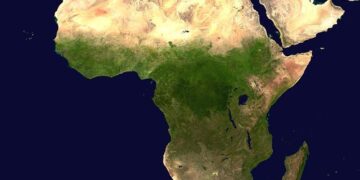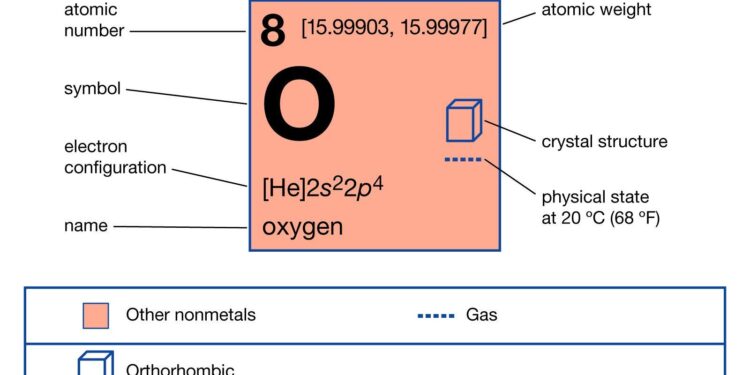State of Washington officials are intensifying efforts to monitor and address the vital levels of oxygen and nutrients in Puget Sound, a crucial ecosystem supporting diverse marine life and regional economies. The Department of Ecology has released new data highlighting trends in oxygen depletion and nutrient loading, underscoring both natural processes and human impacts. As concerns grow over the health of this iconic waterway, understanding the balance of oxygen and nutrients has become essential in guiding effective environmental policies and protecting Puget Sound’s future.
Oxygen Levels in Puget Sound Reveal Alarming Trends Impacting Marine Life
Recent assessments of dissolved oxygen in Puget Sound waters have highlighted a significant decrease in levels, particularly in the deep basins during summer months. This decline poses serious risks to the region’s unique marine ecosystems, affecting species such as Pacific salmon, Dungeness crabs, and bottom-dwelling invertebrates. Low oxygen, or hypoxia, has been linked to increased algal blooms fueled by nutrient runoff from urban and agricultural areas, which exacerbate microbial activity and oxygen consumption in the water column. Scientists emphasize that these changes create “dead zones” where marine life struggles to survive or is forced to migrate, disrupting food webs and commercial fisheries alike.
The Department of Ecology’s ongoing monitoring program highlights several key factors contributing to these patterns:
- Nutrient Over-enrichment: Elevated nitrogen and phosphorus levels accelerate eutrophication.
- Water Circulation: Reduced mixing due to climatic shifts lowers oxygen replenishment in deeper waters.
- Temperature Rise: Warmer waters hold less dissolved oxygen, compounding hypoxic conditions.
Table 1 below summarizes seasonal oxygen concentrations (mg/L) measured at several sentinel stations across Puget Sound, illustrating the downward trend over the past five years.
| Monitoring Station | Winter (2023) | Summer (2023) | Summer (2018) |
|---|---|---|---|
| Elliott Bay | 8.5 | 4.3 | 6.1 |
| Hood Canal | 7.9 | 3.8 | 5.5 |
| Admiralty Inlet | 9.0 | 5.0 | 6.8 |
Nutrient Pollution Sources and Their Role in Oxygen Depletion Across the Region
Excessive nutrients entering Puget Sound largely stem from both point sources and nonpoint sources, each playing a significant role in disrupting the delicate balance of oxygen in the water. Key contributors include:
- Agricultural runoff: Fertilizers rich in nitrogen and phosphorus wash from farmland into rivers and streams.
- Urban stormwater: Carrying pollutants from roads, lawns, and impervious surfaces directly into the Sound.
- Wastewater discharges: Effluent from treatment plants that may still contain elevated nutrient levels.
- Atmospheric deposition: Nutrients from air pollution settling into the water.
These inputs fuel excessive algae growth, which upon decomposition, consumes dissolved oxygen and creates hypoxic conditions detrimental to marine life. The influence of these sources varies across the region, with urbanized areas exhibiting more dramatic oxygen fluctuations.
| Source | Primary Nutrient | Estimated Contribution (%) |
|---|---|---|
| Agriculture | Nitrogen & Phosphorus | 45% |
| Urban Stormwater | Nitrogen | 30% |
| Wastewater Treatment | Phosphorus | 20% |
| Atmospheric Deposition | Nitrogen | 5% |
Monitoring efforts highlight seasonal peaks in nutrient levels coinciding with rainfall and agricultural cycles. By identifying hotspots and dominant sources, targeted management strategies can be devised to reduce nutrient loads and improve oxygen conditions vital for sustaining Puget Sound’s aquatic ecosystems.
Strategic Actions Recommended by the Department of Ecology to Restore Puget Sound Health
To tackle the ongoing challenges in Puget Sound’s oxygen and nutrient imbalances, the Department of Ecology emphasizes targeted actions focusing on both prevention and remediation. Key strategies include reducing nutrient runoff from agricultural and urban sources by promoting best management practices such as cover cropping, buffer strips, and improved stormwater infrastructure. Restoration of natural wetlands and estuarine habitats is also prioritized to enhance the Sound’s natural filtration and oxygenation capabilities, creating resilient ecosystems capable of supporting diverse marine life.
Another critical approach involves upgrading wastewater treatment facilities to lower nitrogen discharges, combined with robust monitoring programs designed to track oxygen levels and nutrient concentrations in real time. The department further encourages collaboration between local governments, tribes, and community groups to foster sustainable land use policies and public awareness campaigns. The following table summarizes the main strategic actions and their expected ecological benefits:
| Strategic Action | Primary Goal | Expected Outcome |
|---|---|---|
| Reduce Agricultural Runoff | Limit excess nutrients entering Puget Sound | Improved water clarity and reduced algal blooms |
| Restore Wetlands & Estuaries | Enhance natural filtration and oxygenation | Increased habitat quality and stabilized oxygen levels |
| Upgrade Wastewater Treatment | Lower nitrogen discharge | Reduced hypoxia risk in critical areas |
| Implement Monitoring Programs | Real-time tracking of water quality | Informed management decisions and rapid response |
- Promote community engagement to support grassroots restoration efforts.
- Enforce regulations on land use to mitigate nutrient pollution.
- Support scientific research to refine understanding of oxygen dynamics.
To Wrap It Up
As Puget Sound faces ongoing environmental challenges, understanding the dynamics of oxygen and nutrient levels remains crucial for protecting its diverse marine ecosystems. The Department of Ecology’s continued monitoring and research efforts provide valuable insights that inform policy and restoration initiatives. Maintaining balanced oxygen and nutrient conditions is essential not only for aquatic life but also for the communities that rely on Puget Sound’s health and resources. Staying informed and supporting these efforts will be key to ensuring the long-term vitality of this vital waterway.






























